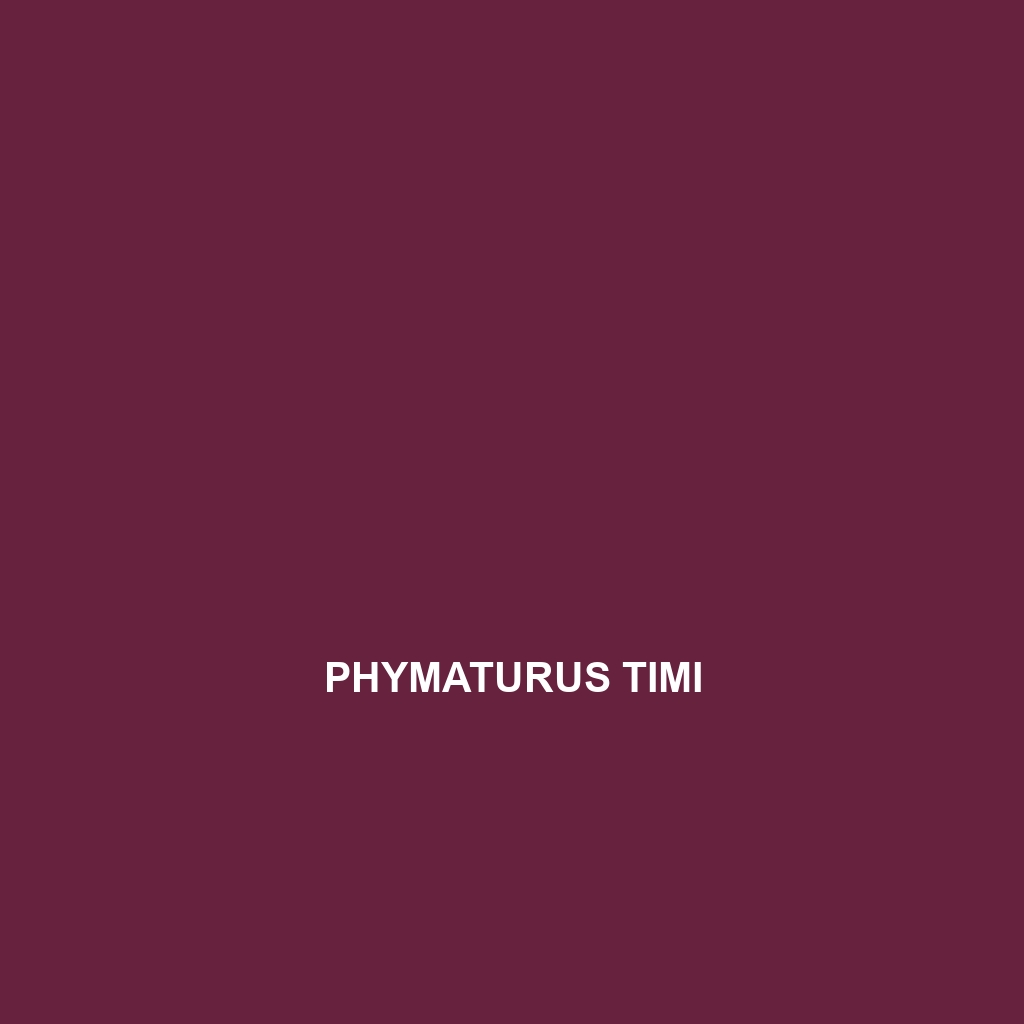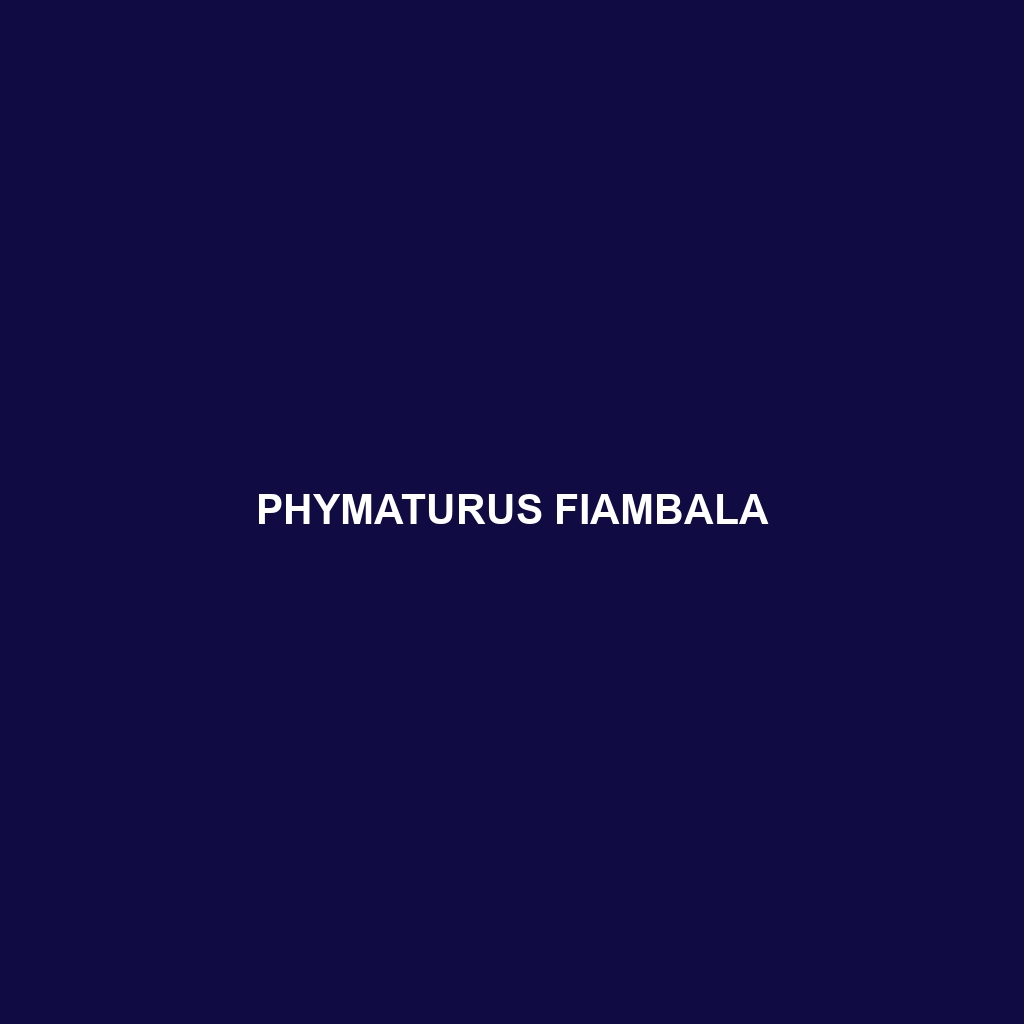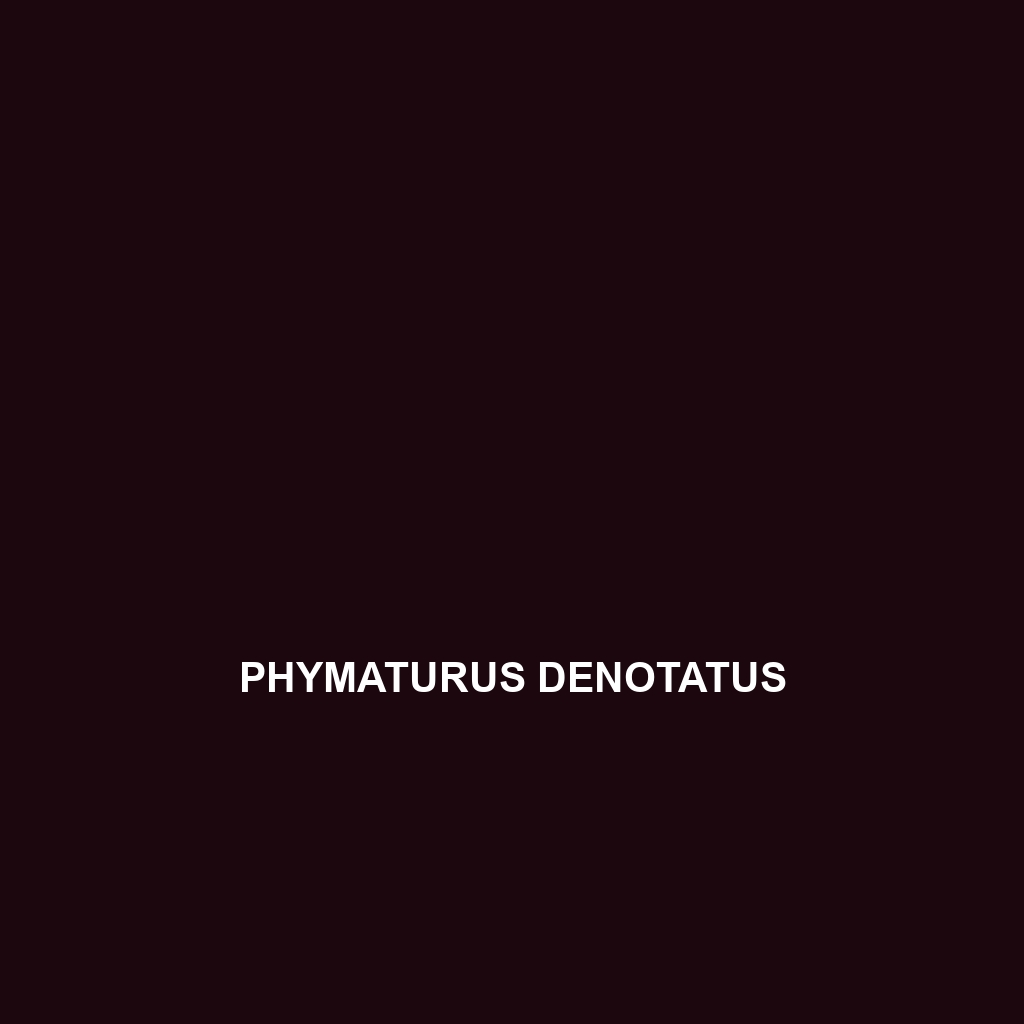<b>Phymaturus timi</b>, a unique lizard native to the rocky scrublands of Patagonia, Argentina, measures 15 to 20 cm and showcases earthy brown and grey coloration for effective camouflage. Primarily insectivorous and diurnal, it plays a vital role in its ecosystem by controlling insect populations while serving as prey for larger predators.
Tag: unique lizard adaptations
Phymaturus nevadoi
<p><b>Phymaturus nevadoi</b>, a moderately-sized lizard native to the high-altitude regions of the Andes in Argentina, exhibits unique coloration and robust features that aid in survival. This vulnerable species primarily feeds on insects and plays a crucial role in its ecosystem by regulating insect populations while serving as prey for larger animals.</p>
Phymaturus katenke
<p><b>Phymaturus katenke</b>, a vulnerable lizard native to the Patagonia region, thrives in rocky hills at elevations of 500 to 2000 meters. With its distinctive coloration and diurnal habits, this insectivorous species plays a crucial role in its ecosystem by controlling insect populations and serving as prey for larger predators.</p>
Phymaturus fiambala
Discover the Phymaturus fiambala, a unique lizard from Argentina's Fiambalá Valley, known for its robust body, distinctive gray to brown coloration, and diurnal behavior. This omnivorous species thrives in rocky habitats and plays a crucial role in its ecosystem, contributing to seed dispersal and pest regulation while currently facing vulnerabilities due to habitat destruction.
Phymaturus delheyi
<b>Phymaturus delheyi</b> is a medium-sized, diurnal lizard native to the arid Patagonian steppe of Argentina, distinguished by its stocky body, vibrant coloration during mating, and a diet primarily consisting of insects. This species plays a vital role in its ecosystem, controlling insect populations and contributing to plant seed dispersal.
Phyllodactylus benedettii
Benedetti's Gecko (<i>Phyllodactylus benedettii</i>) is a fascinating insectivorous lizard found in the eastern Andes and lowland areas of Colombia and Ecuador. With its unique ability to change color and regrow its tail, this nocturnal gecko thrives in diverse habitats, contributing to the ecological balance by controlling insect populations.
Phrynosoma goodei
Goode's horned lizard (<i>Phrynosoma goodei</i>) is a fascinating species native to the arid regions of Arizona and New Mexico, characterized by its distinctive horn-like head projections, flattened body, and unique defense mechanism of camouflage. This insectivorous lizard thrives in semi-desert habitats, playing a vital role in its ecosystem by helping control insect populations.
Phrynosoma ditmarsi
Discover Phrynosoma ditmarsi, the fascinating horny toad known for its unique flattened body, spiny camouflage, and diurnal behavior. Native to arid regions in the southwestern United States and Mexico, this insect-eating lizard plays a crucial role in its ecosystem while adapting to varying temperatures and habitats.
Phrynosoma cornutum
Discover the fascinating Texas horned lizard (Phrynosoma cornutum), known for its unique horn-like projections and spiny scales. Native to the arid landscapes of the southwestern U.S. and northern Mexico, this charming insectivore primarily feeds on ants and plays a crucial role in local ecosystems.
Pedioplanis undata
Discover the <b>Pedioplanis undata</b>, commonly known as the sand lizard, a diurnal insectivore native to southern Africa's arid regions. With its distinctive mottled coloration and exceptional burrowing abilities, this species plays a crucial role in maintaining ecological balance while thriving in sandy habitats.









